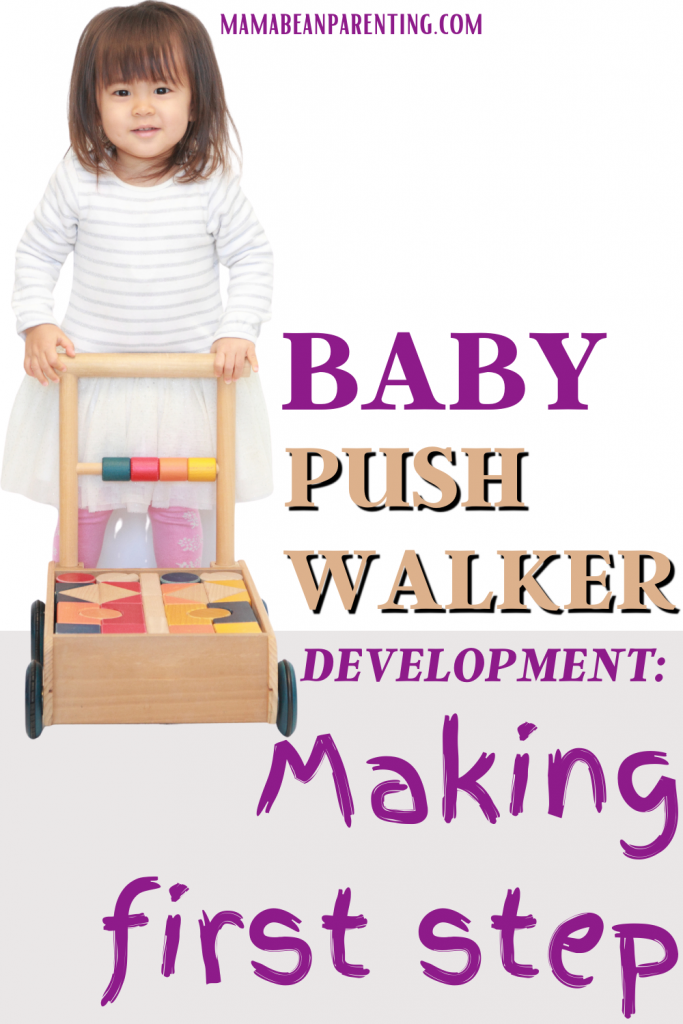For babies from 6 months to 3 years, a baby push walker is a toy specifically designed for physical and cognitive improvement. For parents looking to encourage their children to learn how to walk, you can start on the right foot with baby push walker development.
But, are toy walkers as safe and efficient as they’re advertised to be? In this article, we will explore the benefits and the disadvantages, as well as the safety concerns involved.
However, it’s important to note that baby push walker development remains a topic of heated discussion. In fact, some parents and experts claim that toy walkers are harmful to young babies, and that they pose a notable risk to their natural growth and progress.
On the other hand, the Montessori method enables the use of a baby walker.
All in all, it’s crucial that we explore their role in promoting developmental growth thoroughly. After all, early childhood is a sensitive period in which young children experience rapid growth and changes, which includes many physical developments.
From building strength to refining hand-eye coordination – what role do push walkers play in cultivating safe and healthy physical progress? Especially today, with so many variants and numerous innovative features, parents have to take everything into account.
We’re here to help you make an informed decision.
The Evolution of Baby Push Walkers

The earliest prototypes and contraptions date back to the 15th century.
However, in more recent history, the first simple wooden push walkers came to be in the 20th century – toys on wheels with a handle for young children to hold and push with the purpose of learning how to walk. The idea remains the same, but features have improved.
Not only improved, mind you – the features grew more complex and abundant.
The first wooden constructs evolved quickly and became more refined, gaining additional features such as adjustable handles, seat heights and even brakes. This allowed for baby push walker development to become much safer and customizable to every young child.
With the industrialization of plastic, baby push walkers outgrew the first wooden wonky designs and advanced to plastics, which made them more affordable to a wider audience.
In the coming years, different variants of the original developmental idea came to be. So, we recognize baby activity centers as a product of direct inspiration from baby toy walkers, providing a fun and interactive experience to a developing young child.
Even the Montessori method has recognized a baby walker as a useful tool.
With the state of technology today, it’s safe to say that baby push walker development has practically reached its peak. Safer than ever, stacked with extra features and in great variety – parents today have so many designs to choose from that it can be a headache.
Despite modern technology, the underlying question still remains firm in regards to baby push walker development. Are baby walkers a safe tool in promoting early childhood progress as babies learn to take their first steps – or are they, as some claim, unsafe?
In order to get to the bottom of the question, we have to understand the details of baby push walker development, the specific areas of growth that these useful toys target.
The Benefits of Baby Push Walkers
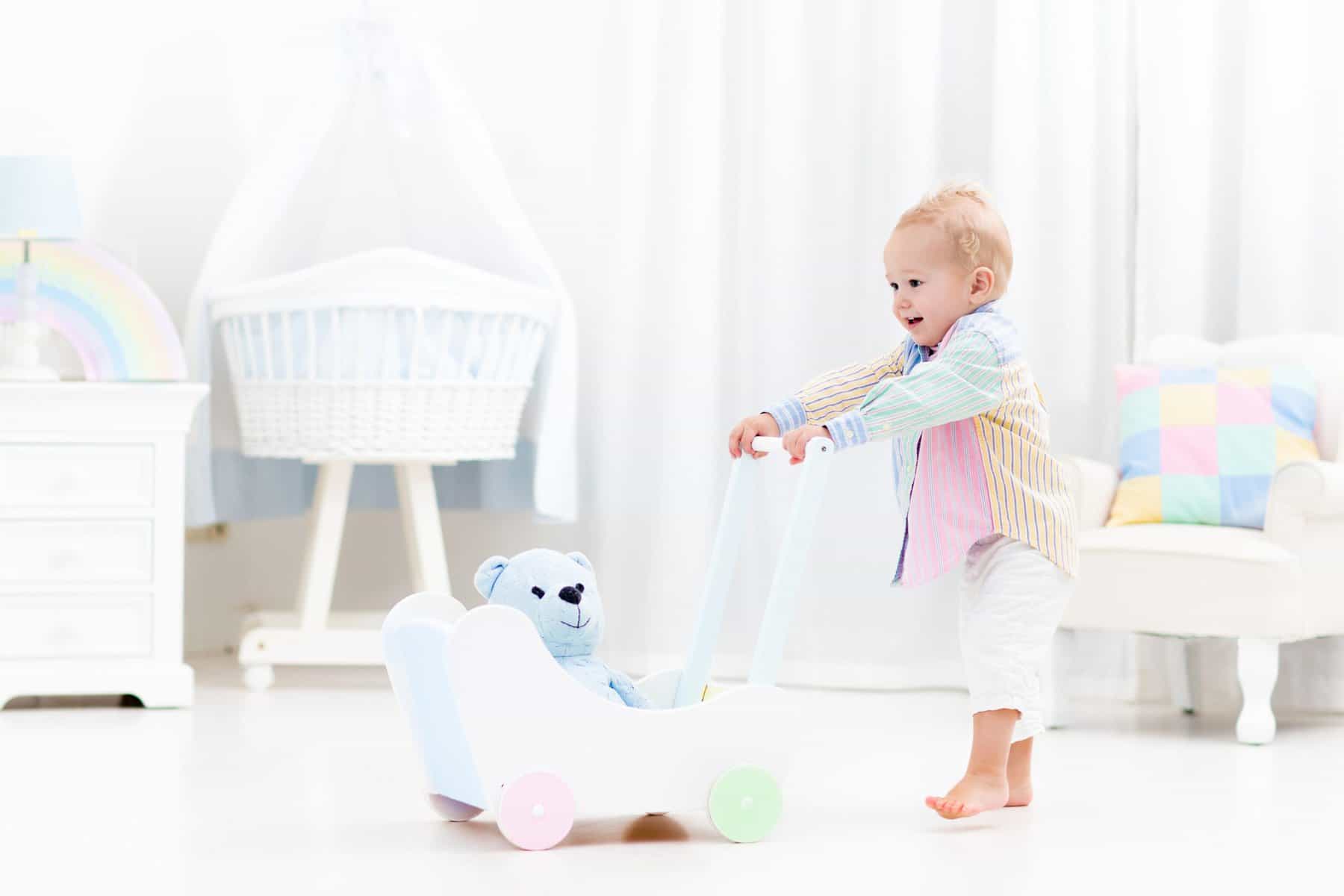
Even though the topic of baby push walker development is still being dissected by parents and experts, it’s important to consider both sides of the coin. So, let’s start with the potential benefits of using baby walkers to promote safe early childhood progress.
Baby push walkers are traditionally recognized for helping kids learn how to walk, but what areas precisely do these toys affect? Baby push walker development encompasses not only physical improvement, but cognitive, sensory and social progression, as well.
Let’s explore these areas of growth thoroughly so as to get the full picture.
1. Baby walkers focus on building strength, coordination and balance. In particular, these skills and abilities are targeted. These walkers have to be moved. Therefore, young kids have to apply strength in order to move them, which stimulates muscle growth.
The very act of pushing and moving the toy demands balance and coordination, which develops gross motor skills, hand-eye coordination like an advanced physical activity.
2. Baby push walker development improves cognitive functions, as well. What does that mean, precisely? It means that it focuses on improving how children think, explore and, basically, figure things out. Using a baby pusher, therefore, refines problem-solving skills.
Moving baby walkers enhances not only hand-eye coordination, but spatial coordination, as well, since a child has to maneuver their immediate surroundings and navigate obstacles, all of which works to better their understanding of the world around them.
Modern technology has advanced and, therefore, some of the best baby toy walkers include extra features, such as interactive games which are always fun to explore.
3. The process of pushing or pulling the walker contributes to the improvement of your child’s sensory abilities, too. How so? Your little one is learning how to control and maneuver with the baby walker through their hands, which refines their sense of touch.
Since the very act of pushing toy walkers demands going from one place to another, the process also actively stimulates and cultivates your child’s sensory awareness. This allows them to better comprehend how their body interacts and responds to the environment.
4. Besides physical, cognitive and sensory functions, baby push walker development improves social skills, too. Teaching your kid how to use a baby push walker is a social interaction that promotes bonding. Your child needs your guidance and supervision.
All things considered, the benefits are many. Baby push walker development encompasses many key areas in early childhood growth. That makes it a valuable tool for parents to utilize as they provide fun and interactive opportunities for their children to experience.
However, with so much variety, how do you choose the best one?
Choosing the Best Baby Push Walker
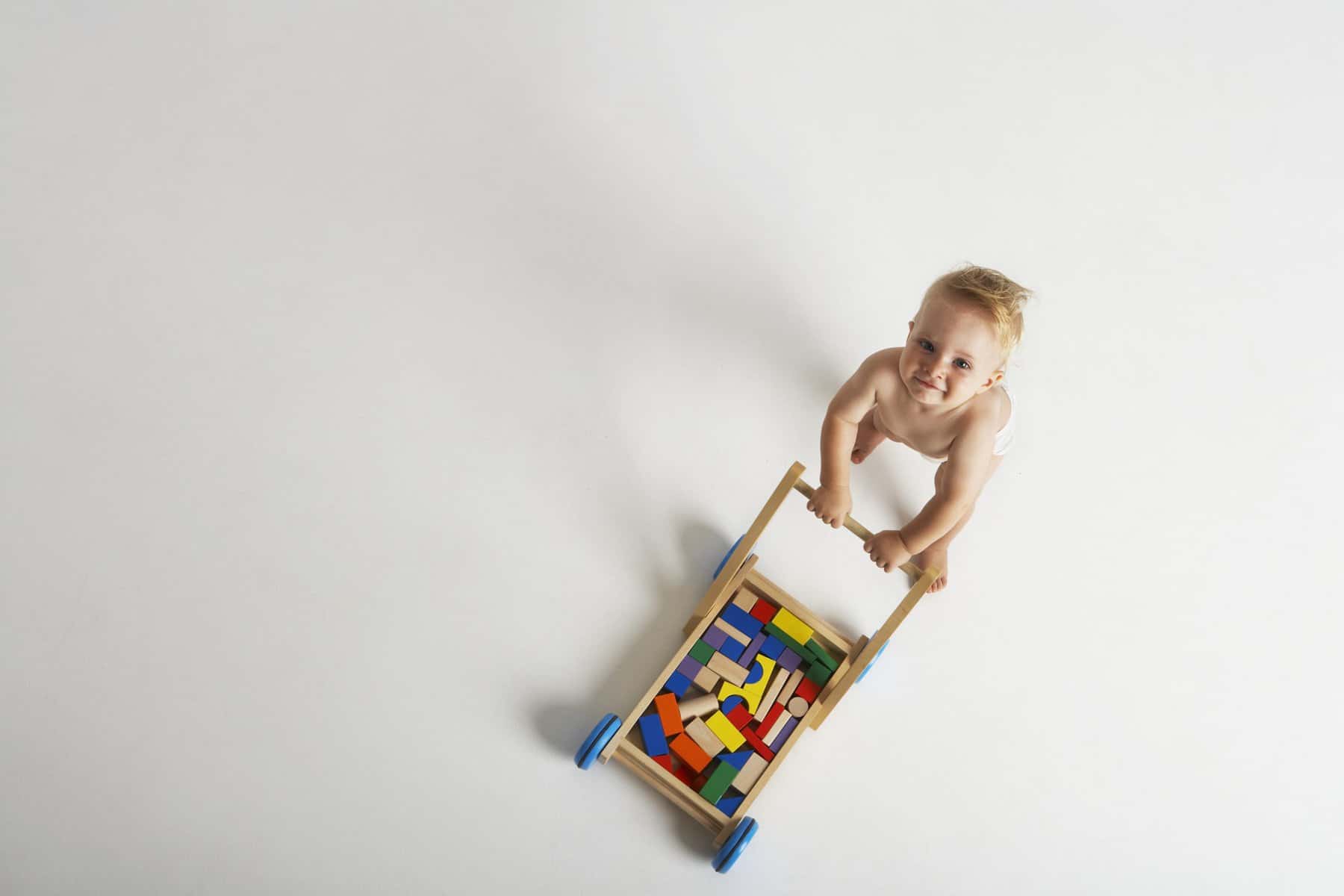
With so many options available, and not to mention the variety of features included, it can be rather difficult for parents to know where to start. However, we’re here to ease and simplify the selection process by helping you find a great baby walker for your little one.
While we won’t dive into specific models, we’re going to go over all the key factors and any additional advice you have to take into consideration, especially the safety features.
First things first, consider the age and weight of your child. Follow the instruction manual in order to familiarize yourself with the weight restrictions and age-appropriate use of the toy. You want to make sure to choose a push toy suitable for your child.
When it comes to safety, consider the overall stability. The number one risk in baby push walker development is, after all, falling over. A stable walker, therefore, will support your baby fully and ensure that the toy does not easily tip over and cause unnecessary injury.
Before you make up your mind, consider also the adjustability options included. Since it’s likely that you will be using your product for a long time, you want to ensure that you have enough adjustability options to accommodate your growing kid for a year or two.
Some models come with built-in activity centers, which include a lot of entertaining and interactive games and activities to keep your little one stimulated as they learn to walk.
However, it’s also important to take into account the actual size and weight of the toy and its portability features, since certain models can be rather cumbersome and difficult to store away when your baby is not using them. You want something particularly portable.
Taking into account all of these factors is crucial, but there’s also the matter of the actual price. From affordable to extremely pricy, baby push walker development is a saturated market. Since we’re talking about your baby’s safety, you need a reasonable budget.
But, what about the actual safety features? Here’s what you should look for.
Baby push walker development involves a lot of going and stopping. Therefore, it goes without saying that you need high quality brakes so that your child can stop safely.
We’ve covered stability earlier, but another factor to take into account is a non-slip surface, which means that children can safely grasp and interact with the surface of the baby walker without parents having to worry about their child slipping or even falling.
Other than that, certain models offer an enclosed design which maximizes safety, allowing your baby to practice walking around the house in a completely safe way.
Finally, a safety harness, if included, is a great bonus to the whole package.
Finding the best toy for baby push walker development may take some time, but with our in-depth advice in regards to the factors outlined above, as well as the safety features and any additional features, we can help you make an informed decision and find the best one.
Using a Push Walker Safely and Optimally
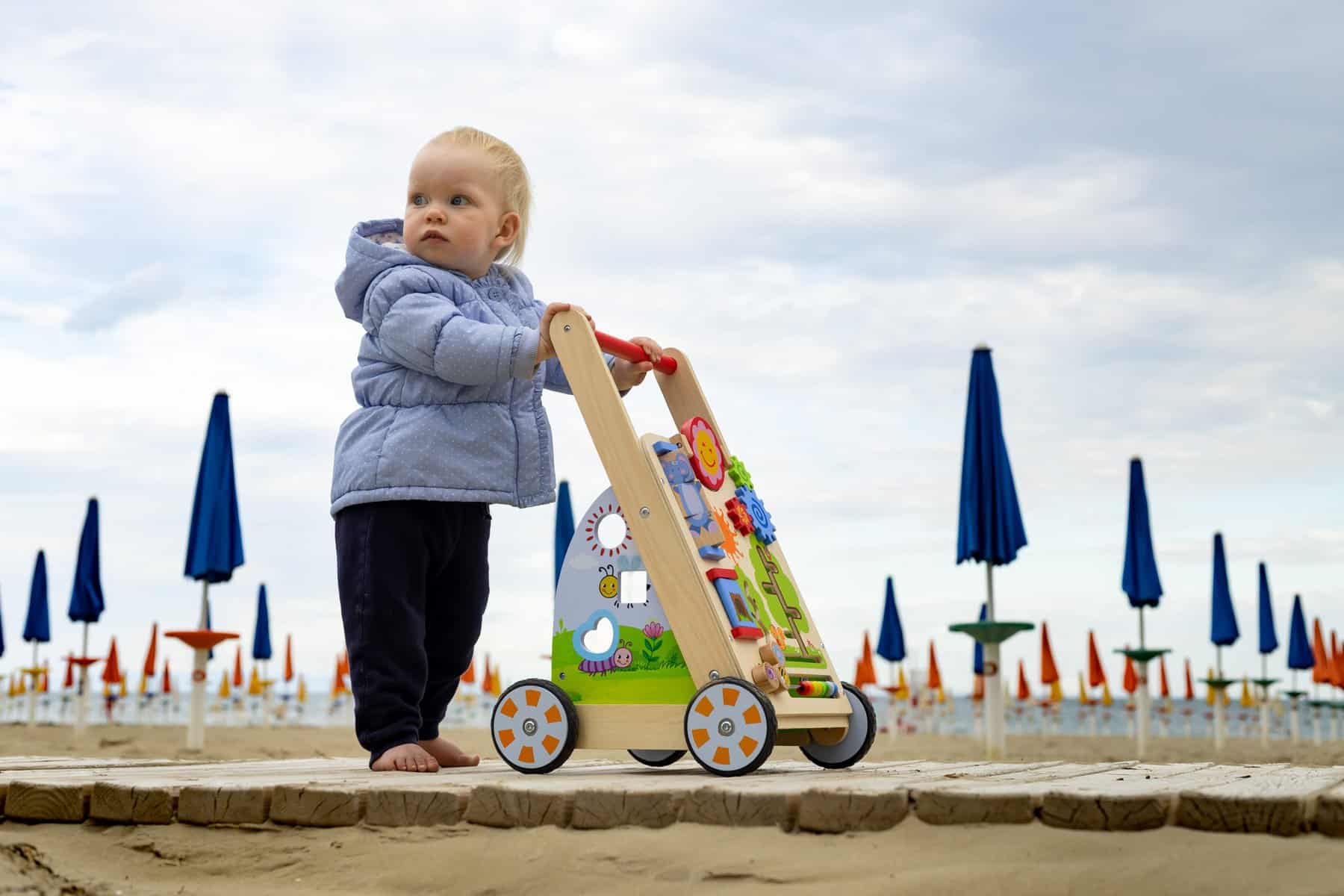
Baby walkers are great push toys to help little ones learn how to walk.
For parents that aim to help a baby develop important motor and coordination skills, certain types of developmentally appropriate toys can be extremely helpful – like this one. However, the question yet remains to be answered: how exactly do you use them?
Before you use a push toy to help your little one, consider age appropriateness.
What does that mean? Babies need to meet certain milestones before introducing a baby push walker development plan. For example, the ability to sit upright without assistance is a must. However, it’s all right if your baby hasn’t yet learned how to walk on their own.
After all, that’s the purpose of baby push walker development – taking your child on a journey from crawling to walking, one tiny little step at a time. Still, it’s important for parents to consider the age, weight and height of their baby before making a purchase.
Bear in mind that during the entire baby push walker development process, you have to be present. The first line of defense, so to speak, is your parental supervision. Therefore, keep your child in sight at all times and ensure a safe hazard-free environment for them.
Regardless of the safety features included, the area where your child gets to use a baby pusher should always be safe and appropriate. What does that mean? Well, it implies a flat surface without any obstacles on the ground or any sharp-edged objects within reach.
Even the smallest of toys can easily become a tripping hazard.
The Montessori method of parenting advises that the child should have enough say to decide when to use the baby walker – but always under your constant surveillance.
Also, make sure to mind the time. While baby push walker development is a great way to help babies improve their physical capabilities, it’s important that parents don’t overuse it. Why? Babies need opportunities to practice crawling and walking in a natural way.
In general, limit your child’s time in a walker for up to 30 minutes.
Finally, keep in mind that every child responds to toys and tools in different ways. More than that, babies take time getting used to them, as well. Not to mention that your baby may not be ready for it yet. Responsible parents have to observe their baby’s growth.
Keep all of these tips and tricks in mind, and you will quickly master how to use these toys in a way that allows your baby to grow safely alongside the benefits of baby push walker development. Above all else, be patient, understanding, and remember to mind the risks.
In Conclusion
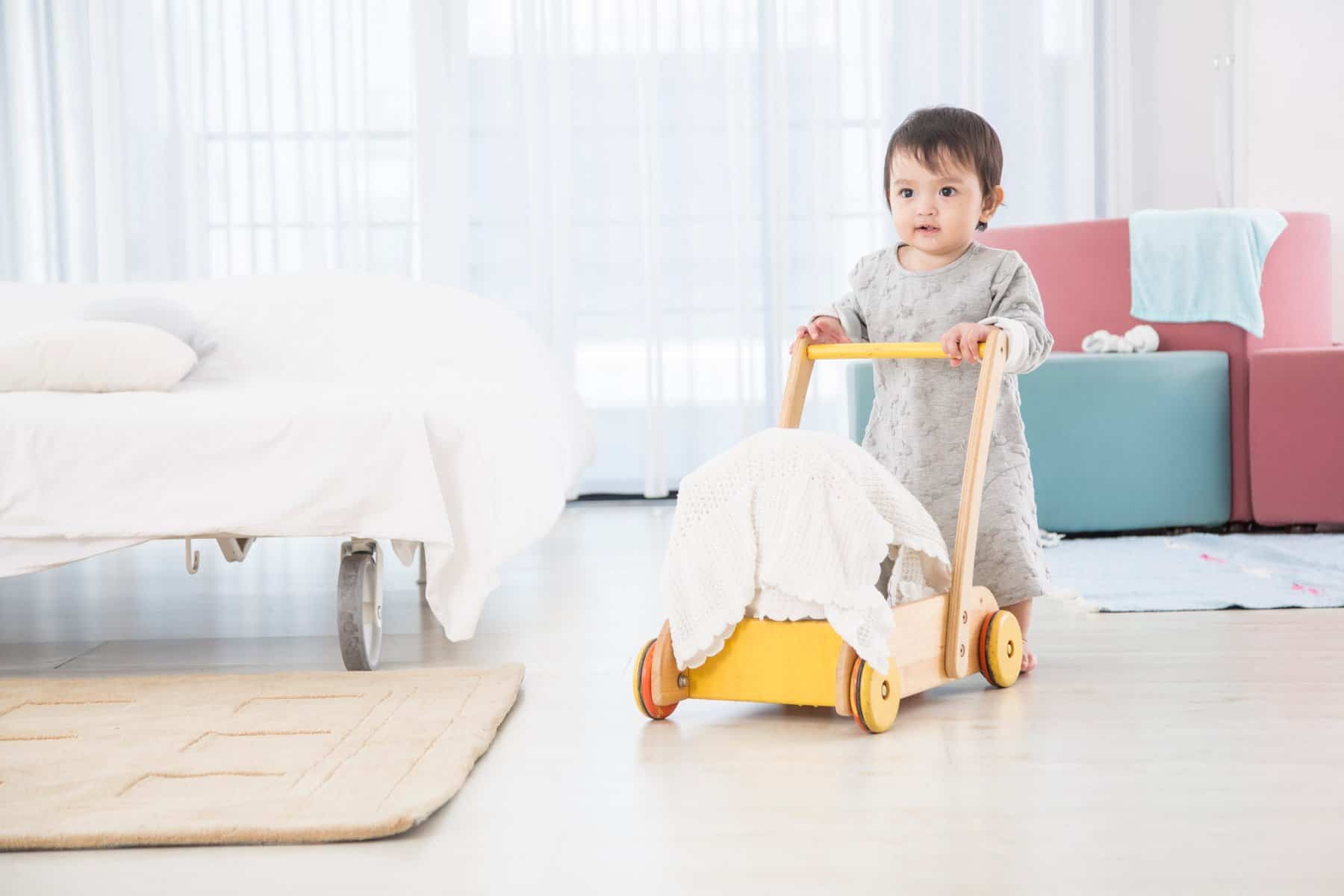
Yes, it’s true that opinions differ currently as to the efficiency of using these types of toys to promote your child’s developmental growth. In our opinion, the key takeaway is to use them reasonably, meaning that they should never be a substitute for natural exercise.
Even the Montessori method considers a baby walker a valuable tool.
When used in accordance with the instructions manual, these types of toys help children practice balance and coordination, as well as develop physical and cognitive abilities.
However, it still remains the parent’s responsibility to ensure a safe and controlled environment for their kids to practice walking with the aid of a baby push walker.
Bearing in mind that a toy walker, even with the Montessori method to back it, should never be a substitute for a hand-on approach and regular, all-natural exercise, using it occasionally, safely, with our tips and guidance in mind, can have a very positive effect.
In fact, combining it with hands-on learning may be the best strategy out there.

Mother of three and a primary school teacher. I’ve always loved being around children and helping them, so I chose my path as a teacher. It is sometimes hectic with three children, but I am 100 percent into it and wouldn’t change it for anything in the world.


